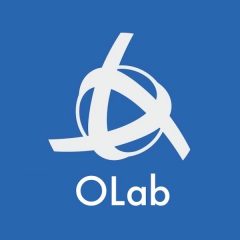Breaking news!
Just had lunch with my senior technical advisor about progress on OLab4 development. And, boy, do I have news for you.
He has been exploring a whole new approach to Turk Talk, in-app messaging, and flow control for OLab4. This opens up a whole raft of possibilities for what educators will be able to do with the platform. Many of these will be particularly helpful for small group and team-based learning.
Some of the new functions that will be possible:
- improved chat messaging between teachers and learners
- more effective nudges and reminders during case play
- on-the-fly room allocation
- rules-based responses and actions
- scheduled launch of certain objects and modules within a case
- more flexible display of learner progress within the case
Some of these functions, such as popup reminders, were possible in OLab3 but it was a bit of a hodge-podge to get things working. By making the Turk Talk functionality work as a separate service, rather than being tightly integrated as it was within OLab3, we can make things much flexible and future-proof.
Team-based Learning
We talked before about how OLab4 is better able to handle team-based learning. By using activity metrics, we can measure how effective the contributions are of each team member. All other team rating scales we have looked at will only evaluate the function of the team as a whole. This goes further.
Now, by using Turk Talk as a messaging and control service, we can introduce some neat new capabilities. The Turker or Director can now redirect team members into new areas of the case, if they are struggling (or if they are excelling and could benefit from some bonus points through extra achievements).
Hockey Lines
In blended scenarios working with other resources such as hi-fidelity mannekins, we often find that there is a bottleneck created around these high-cost resources. When running a resuscitation code, there are typically 3-5 active team members working on the mannekin, with the remaining 8-12 watching from the sidelines. This is why we came up with the premise of Hockey Lines, which some of you may be familiar with.

In Hockey Lines, the idea is that you can rapidly switch in secondary team members from the “bench”. This improves Crew Resource Management and active communication loops enormously. But up till now, all this has only been feasible with live in-person sim rooms. Now, with this new approach to Turk-Talk-as-a-Service, we will be able to support a similar Hockey Lines approach within our OLab4 scenarios.
Service-based affordances
There are other advantages to the Turk-Talk-as-a-Service approach. It will allow us to add in more sophisticated logic and text parsing to our scenarios. It will enable us to create time-based interactions such as reminders if you are taking too long, scheduled start of a Turk Talk session, or even something like the Tamagotchi cases that we tried to implement years ago.
All of these crazy ideas have been in our melting pot for a while. But previously, it was hard to create the needed functionality and it depended on custom coding because Turk Talk was so tightly embedded within the OLab3 code base. Using the Turk-Talk-as-a-Service approach, it opens up what can be done on the programming side dramatically. But for the average case author, they will not need to get bogged down with such programming. They will simply be able to pick the kind of triggers and alerts that they want to make use of in their Scenarios.

It will even allow us to explore the integration of chatbot services into some of our scenarios. Our previous attempts and explorations had shown us that the amount of work involved in integrating a chatbot service exceeded the time and resources available to the average case author. Great for medium to large businesses; too much for us. But, now in taking the Turk-Talk-as-a-Service approach, we can explore the feasibility of creating more generic chatbot response trees that can be reused across different scenarios. Such a leveraging effect may transform such chatbot services from a curiosity into something practical.
Lastly, we plan to create an API for the Turk-Talk-as-a-Service. This means that other applications and services can more readily interact with Turk Talk and will allow us to extend its capabilities beyond OLab, much as we did with our CURIOS video mashup service.

